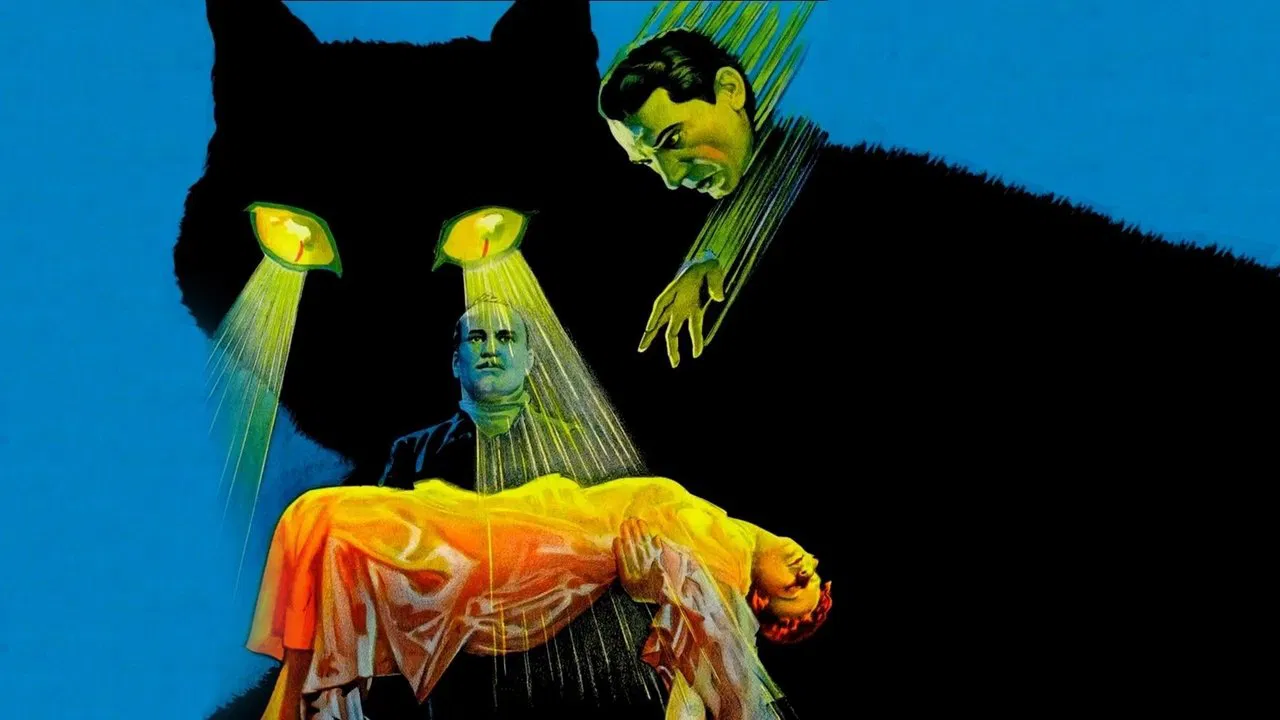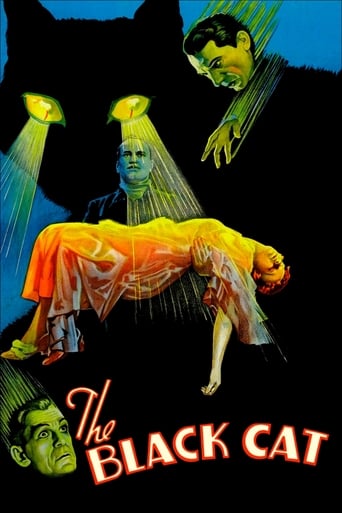

"The Black Cat" from 1934, is the best of the Karloff/Lugosi collaborations. Never again in their future films together would both actors have equal screen time and be equally relevant to a films plot. This makes for rather grim viewing (apart from a brief comic interlude) but the way in which this film is cast, directed, written and photographed makes for a gripping and fairly original horror film. The plot owes very little to the short story from Edgar Allan Poe but that slight reference is of no importance.For once, Bela Lugosi is cast against type as he is a more sympathetic character - even though he is still a bit unhinged!Boris Karloff is pure evil as the leader of his own group of Satanic followers. He is also the one responsible for betraying a number of his fellow countrymen during the first world war - Lugosi included.It is the performances of Karloff and Lugosi that stand out - they compliment each other very well.The American film censors weren't happy with the final version of "The Black Cat" and as a result, they instructed "Universal" to shoot additional footage in the hope of making the film more fit for public exhibition. During the extra filming, the director Edgar Ulmer managed to sneak in a scene that went by the American film censors without realising what a controversial scene it was!One of the best horror films from "Universal's" first horror cycle.
... View MoreTraveling through the Austrian countryside, a man and his wife get stranded at the remote villa of a tormented architect along with his long-time rival who is out to seek revenge for long-dead wife and must get away before being dragged into the escalating war. This was quite a bland and overall really unappealing effort without much going for it. Much of the film's flaws is based around the fact that nothing at all happens in here. It's mostly just a seemingly- endless series of the two talking to each other about the need for revenge and the truth about his family's whereabouts yet does nothing with them due to the whole concept of bringing the two together in real-life. It's all about the actors in this situation rather than doing anything special with them since they're just simply yakking incessantly at each other which does nothing interesting within the concept of their scenes to make this come off as a horror film with the way they go on endlessly that isn't in the slightest bit exciting or engaging. Their battle of wits doesn't really generate any kind of action at all until the finale and just rests of them saying these supposedly spooky things to each other in a creepy house but is all that's pretty much accomplished here for the vast majority of the film. There's just so little of the film where it does anything because it's so concerned with having these two just stand around yakking endlessly at each other that it really just drags the film out endlessly despite the brief running time, and does make the rather fine appearance of the revenge at the end much more compelling as it comes at the end of all this overt blandness. The start of it all, from their taunting him with leaving and then forcibly restraining them at the house gives this a somewhat creepy vibe and when placed alongside the Satanic ceremony in the main cellar and the battling down in the basement gives this such a strong and striking series of action scenes that truly set the stage for the truly legendary finale that serves this one incredibly well with it's dark and gruesome antics. It's enough to make this more watchable than it would otherwise be, but it's still hurt by so much utter blandness beforehand.Today's Rating: Unrated/PG: Violence.
... View MoreI have to admit this is one of my all time favorite films. Edgar Ulmer created one of the most chilling horror/fantasy odysseys in film history.Karloff and Lugosi are brilliant in their portrayals of the antagonists Hjamar Poelzig and Vitis Werdegast. The setting is a modernistic and nightmarish Hell House designed by the Satanic architect Poelzig which is wonderfully realized by Ulmers direction and set design, John Mescal's camera work, and Heinz Roenhelds eerie musical score. Peter Ruric's screenplay contains some of the most quotable lines in horror movie history, including my all time favorite " You see Vitus, in this house even the phone is dead," The Black Cat was released in 1934 and outraged so many critics at the time that it it help inspire the Catholic League of Decency and it s moral code for motion pictures which became the industry standard for many years. With that and Ulmer "Stealing" the wife of Carl Laemmles nephew, Ulmer was banished to poverty row film making for the rest of his career.
... View MoreInspired by Edgar Allan Poe's poem "The Black Cat". The movie is not a the poem on film despite this the movie is a very good twisted occult thriller - one of better films from Karloff and Lugosi.Joan and Peter Allison are on their honeymoon and met up with Dr. Vitus Verdegast (Lugosi). They are on a bus when it over turns killing the driver. Verdegast (Lugosi) is close to his destination: the home of his nemesis Hjalmar Poelzig (Karloff) and decides to bring the young couple with him for refuge for over night - from there the movie becomes a very creepy occult horror-thriller.I have to say that Karloff's costuming and look in this film is simply awesome and very wicked! Well acted by all but Karloff steals the show.This is a great film for a dark and stormy night!! 9.5/10
... View More